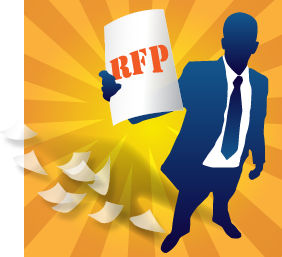How to Run a Successful Web Design RFP Process
 As a service business, there is no avoiding the infamous “Request for Proposal (RFP).” The RFP process is widely considered to be adversarial by service firms receiving them and as a necessary evil by the companies of submit them.
As a service business, there is no avoiding the infamous “Request for Proposal (RFP).” The RFP process is widely considered to be adversarial by service firms receiving them and as a necessary evil by the companies of submit them.
In general, the RFP’s we receive create more questions than answers and leave significant areas open for interpretation, which makes the task of evaluating them more subjective than the issuing company might have imagined.
One of our great partners, Lois Paul & Partners has actually, with the input of their clients, created their own sample RFP as a tool for their prospective PR clients. I admire their effort.
There is another and arguably more important aspect of the RFP process, which has to do with what one might term the “softer side” of tone, personality, attitude or simply wanting the answering firm to be successful.
Two of our recent RFP experiences stand in stark contrast. In one, we and five other firms were presented with a document that had both granular and open-ended components. It was written in the third person and occasionally lapsed into the passive voice and concluded with the specific due date, down to the hour. It included the provision for one global response to online questions, which needed to be submitted on another specific date, to the hour.
The other RFP made little effort to be specific, instead outlining key aspirations, objectives and desired outcomes. The language and tone invited us into their world and presented the desire to find the right partner to unlock the potential of their brand and online properties. The contact promised to make herself available for calls or emails, leaving the frequency to us. Part of this company’s process was to actively engage with potential partners, see what sorts of questions they ask and gain a feel for how it would be to work with them.
Both approaches left many things open to interpretation but the latter experience required of us a much deeper thought and engendered more substantive and strategic conversations, which no doubt informed the company not only of our past work and credentials but how we think. It also gave all of us, a sense that this company was seeking the best we had to offer, and that they actually wanted us to succeed.
Granted, in these crazy busy times, it is understandable that few executives carve out the time to field numerous questions and emails from a collection of vendors, but this company did not just consider the end result of choosing a vendor to do a job, they viewed the RFP process as a strategic team effort and worthy of making the time. That’s smart business.
